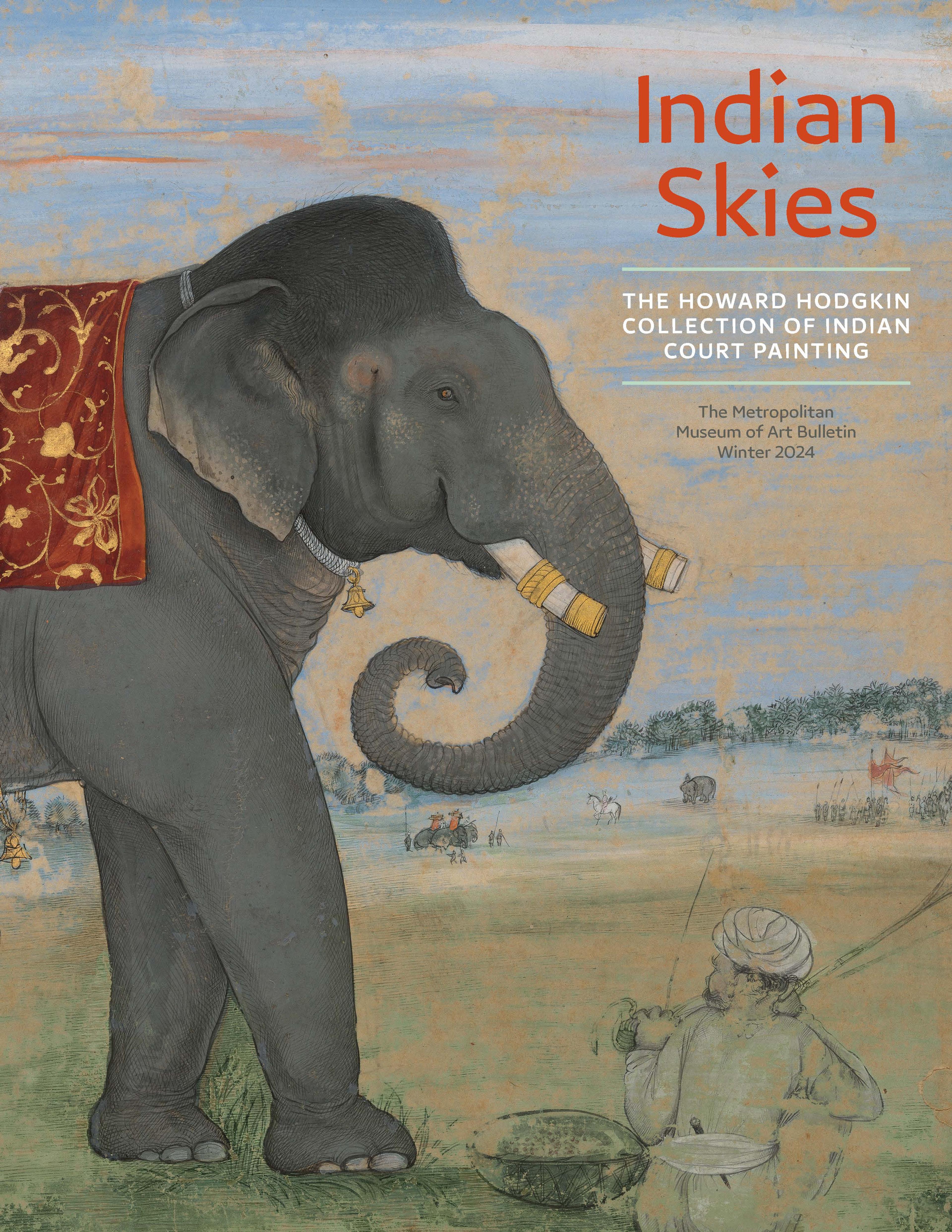A Royal Lion Hunt
This remarkably animated and vibrant hunt scene is a tour de force of Bundi-style draftsmanship. While Rajput artists drew inspiration from Mughal studies of elephants, they went far beyond these largely static depictions to create one of the most vibrant genres in seventeenth-century Rajput painting: the royal hunt on elephant. This quintessentially Rajput theme celebrates the virtues of valor and skill on the battlefield as expressed through the royal hunt. Such large-scale ink and wash drawings were produced as templates for the murals that decorated the interiors of Rajput palaces. The elephant with a princely rider seen here is directly echoed in a mural preserved in the badal mahal (royal apartments) of Bundi Palace.
Artwork Details
- Title: A Royal Lion Hunt
- Date: ca. 1640
- Culture: India, Rajasthan, Bundi
- Medium: Opaque watercolor, ink and charcoal on paper
- Dimensions: Image: 14 3/4 × 40 7/16 in. (37.5 × 102.7 cm)
Framed: 21 × 48 3/8 i× 1 1/8 in. (53.3 × 122.9 × 2.9 cm) - Classification: Paintings
- Credit Line: Howard Hodgkin Collection, Purchase, Gift of Florence and Herbert Irving, by exchange, 2022
- Object Number: 2022.209
- Rights and Reproduction: Image © Ashmolean Museum, University of Oxford
- Curatorial Department: Asian Art
More Artwork
Research Resources
The Met provides unparalleled resources for research and welcomes an international community of students and scholars. The Met's Open Access API is where creators and researchers can connect to the The Met collection. Open Access data and public domain images are available for unrestricted commercial and noncommercial use without permission or fee.
To request images under copyright and other restrictions, please use this Image Request form.
Feedback
We continue to research and examine historical and cultural context for objects in The Met collection. If you have comments or questions about this object record, please contact us using the form below. The Museum looks forward to receiving your comments.
